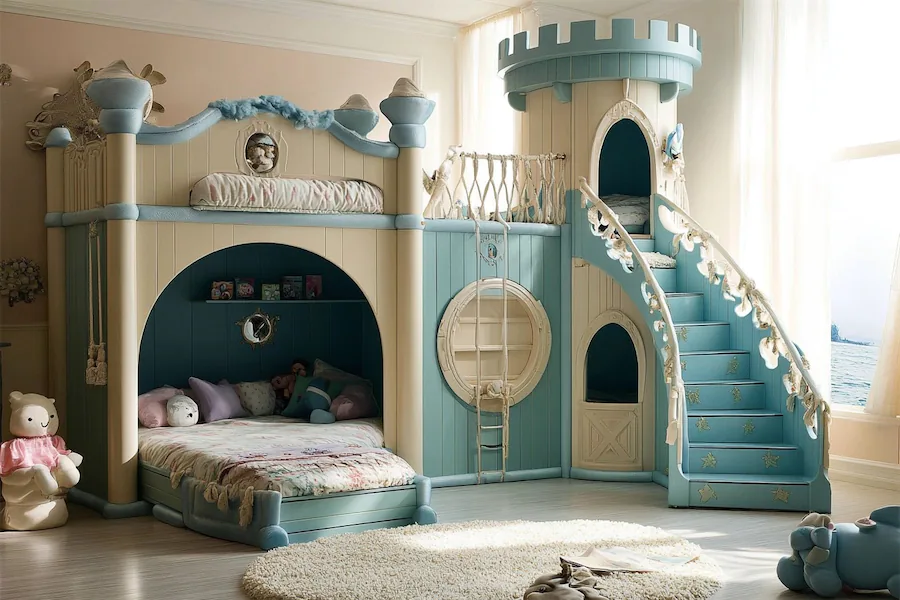Designing a smart kid’s room involves creating a space that is not only functional and adaptable but also incorporates intelligent design elements to foster growth, learning, and creativity. Here’s a comprehensive guide to achieving this:
Introduction to Smart Kid Rooms
A smart kid’s room seamlessly blends technology, multifunctional furniture, and thoughtful design to create an environment that evolves with your child’s needs. By integrating innovative solutions, these rooms can enhance comfort, safety, and engagement.
Key Features of Smart Kid Rooms
- Multifunctional Furniture: Incorporate pieces that serve multiple purposes, such as beds with built-in storage or desks that can be adjusted as your child grows. This approach maximizes space and ensures longevity.
- Smart Lighting: Utilize adjustable lighting systems that can change in intensity and color to suit different activities, from studying to relaxing. Smart bulbs controlled via apps or voice assistants add convenience and adaptability.
- Interactive Learning Tools: Incorporate educational elements like interactive wall panels, maps, or chalkboard walls to stimulate curiosity and learning. These features can be both fun and informative.
- Efficient Storage Solutions: Implement storage options that are easily accessible and encourage organization, such as labeled bins, shelves at child-friendly heights, and under-bed storage. This promotes independence and keeps the room tidy.
Applications of Smart Kid Rooms
- Small Spaces: In compact areas, smart design is crucial. Utilizing vertical space with lofted beds or wall-mounted storage can free up floor space for play and movement.
- Shared Bedrooms: For siblings sharing a room, creating defined personal zones with the use of room dividers or color-coded areas can provide a sense of ownership and reduce conflicts.
- Evolving Needs: As children grow, their preferences and requirements change. Designing a room with adaptable elements, like modular furniture and neutral color schemes, allows for easy updates without complete overhauls.
Considerations When Designing a Smart Kid Room
- Safety: Ensure all materials and devices are child-safe, with no sharp edges, and that electronic components are securely installed. Regularly check for any recalls or safety notices related to smart devices.
- Budget: While integrating technology can be beneficial, it’s essential to balance costs. Prioritize features that offer the most significant impact and consider future-proofing the room to avoid frequent expensive updates.
- Personalization: Involve your child in the design process to create a space that reflects their personality and interests, making it a place they love to spend time. This engagement can also encourage them to maintain and respect their environment.
Conclusion
Creating a smart kid’s room is about harmoniously combining technology, functionality, and personal touches. By thoughtfully selecting adaptable furniture, intelligent lighting, and interactive elements, you can design a space that not only meets your child’s current needs but also grows with them, providing a nurturing and stimulating environment for years to come.
